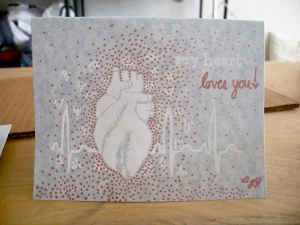With the overwhelming popularity of last week’s NYT OpEd The Busy Trap in my circles, I’ve been thinking a lot about why artists (myself included) overwork themselves. The article seems to think this is self-imposed stress, and to a certain degree this is right, but there are real societal pressures and virtue rewards to overproduction. Isabelle Lowrey writes in her essay Virtuosos of Freedom (in Critique of Creativity) that:
financing of one’s own creative output, enforced and yet opted for at the same time, constantly supports and reproduces the very conditions in which one suffers and which one at the same time wants to be part of. It is perhaps because of this that creative workers, these voluntarily precarized virtuosos, are subjects so easily exploited; they seem able to tolerate their living and working conditions with infinite patience because of the belief in their own freedoms and autonomies, and because of the fantasies of self-realization. In a neoliberal context, they are so exploitable that, now, it is no longer just the state that presents them as role models for new modes of living and working.
That hit hard, but it gets worse:
Experiences of anxiety and loss of control, feelings of insecurity as well as the fear and the actual experience of failure, a drop in social status and poverty are linked with this state of self-precarization. It is for this reason too that ‘letting go’ or other forms of dropping out of or shedding the hegemonic paradigm are difficult. You have to stay ‘on speed’ or else you could be eliminated. You always feel threatened. There is no clear time for relaxation and recuperation. Then the desire to relax and ‘find oneself’ becomes insatiable. Such reproductive practices usually have to be learned all over again. They are no longer the most natural thing in the world and have to be fought for, bitterly, in a struggle with oneself and others. This in turn is what makes the longing for reproduction, for regeneration, so hugely marketable.
To put this in my own words (and for the record, I rather abhor the term “virtuoso” as expressing the artist at work) reproduction has something of a sex appeal to the artist because the materiality of your work – the sheer volume of it – validates your existence as an artist. An artist cannot seriously be motivated by profit if only because so few artists generate reasonable living wages; an artist is therefore typically motivated/validated by production; an artist is only an artist when they are actively producing.
What I don’t advocate for is the creation of a Creative Class (which is divisive in nature in spite of its desire to create ‘better cities’ and is a myth in any case) or the equally distasteful Randian superiority complex. On the flip side there are very real assumptions that art should be free because it is art. I generally agree with this in theory, but this assumes that the artist takes on the cost of production (which is unfair and unrealistic.) It also places the duty of art production in the hands of an already established elite. If we want a diverse population of art makers producing authentic art, and are going to uphold the current state of needing make a living in order to survive; then we must be willing to pay for beautiful things.
Of course, current systems to buy and sell art must also be examined. There is much that has been written about the causes of absurdly overpriced art which I encourage you to read if you are curious. My problem is that rather than suggest that artists should be economic chauvinists or economically depraved, there has to be a third alternative: one which facilitates access to all parties while not starving the producers.
Like maybe the radical notion that all people contributing to the wellbeing of a society, if they actually contribute to the wellbeing of a society, deserve living wages.



